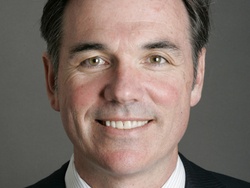


When working to either build a successful corporate team, what better industry to investigate than professional baseball? If you Google "training," you're more likely to get hits on physical training and sports trainers than corporate development!
While the big budgets of pro ball clubs might make you turn a little green, big budgets don't buy camaraderie or a winning season. So how do Major League teams win?
In a blog post, Providence Journal blogger Brian MacPherson answers some of these questions after covering a panel discussion that included Billy Beane (general manager of the Oakland Athletics and profiled in the movie "Moneyball"), and Theo Epstein, Chicago Cubs president and former GM of the Boston Red Sox.
The Oakland A's appeared in three consecutive World Series from 1988-1990 and had the highest payroll of any team in 1991. However, new owners in 1995 slashed payroll. The GM at the time, Sandy Alderson, began using statistical analysis to pick up undervalued players, a skill he taught Beane. Even with the financial situation, Oakland has managed to do quite well using this method versus the gut instinct of scouts to fill his bench. In 2000 to 2003, the A's appeared in four consecutive playoffs and have appeared in two more since then.
Epstein was named the youngest GM in baseball history when he took over the Red Sox at age 28 in 2002. Two years later, he led the team to its first World Series title in 86 years and officially breaking the "Curse of the Bambino." The Sox again took the title in 2007.
MacPherson writes, "Epstein has approached team-building from a completely different perspective than Beane in his years with the Red Sox and Cubs. As his critics have been happy to point out, he's had the financial wherewithal to compensate for his mistakes while Beane has not."
The first key, as highlighted by the panel, is team chemistry. "A team consisting of great players almost always will beat a team of great people," MacPherson writes. "But as the Red Sox learned in the last year or two, dysfunction in the clubhouse can ruin a team of great players -- especially in an under-the-microscope market like Boston.
'If you don't pay enough attention to makeup, you can wake up and have a situation like we experienced here where all of a sudden the whole does not quite equal the sum of the parts,' Epstein said. 'Any potential conflict or any bad fit really gets amplified here.'"
Asset retention and planning ahead also are key. With budgets always being an issue with Major League Baseball, especially for the A's, sometimes players who would really benefit an organization cannot be retained due to salary caps, a limitation corporations do not have in the strictest sense.
Beane is known for trading players before they get too expensive in exchange for what he deems undervalued players who could fill the gap of the player being traded. However, that's not ideal. But without a new stadium, Beane feels he really cannot look too far into the future.
"Beane traded away [outfielder and first baseman] Nick Swisher before he was eligible for salary arbitration...to maintain certainty in his costs. [Beane] couldn't afford to be surprised by a big arbitration award that could wreck what has to be a meticulously planned budget," MacPherson writes.
So Beane looks ahead to see which trades need to be made before things like salary arbitration and free agency come into play, but he cannot plan his roster too far into the future since he cannot foresee which trades he will have to make and who he will get in return. Beane seems to wish things could be different.
"If we could have one thing, it would be to draft, develop and keep our own players," MacPherson quotes Beane as saying. "Having capital, it's not just about signing free agents. Having capital allows you to take your Gio Gonzalez and keep him through the rest of his career."
Don't miss out on updates and chances
to sharpen your skills with participant-centered learning.




3740 N Chestnut St #113 - Chaska, MN 55318-3053